Pi AI transforms our interactions with artificial intelligence by providing customized conversations and support. This personal AI companion adapts to your unique style and priorities to create meaningful interactions. The AI communicates with an empathetic, conversational tone that makes you feel like you’re chatting with a friend rather than using a typical AI assistant.
Pi AI serves as your personal AI (or “Personal Intelligence”) and delivers a friendly, intelligent chat experience powered by advanced machine learning techniques. The chat platform naturally blends into your daily life and provides advice, reminders, and emotional support whenever you need it. It expresses emotions through natural language and emojis to make conversations feel more authentic.
This complete review will explore Pi AI’s functionality, notable features, and real-life applications. You’ll learn about its limitations and see how it stacks up against other popular AI assistants. This information will help you decide if this free-to-use companion deserves a place in your daily routine.
What is Pi AI and how does it work?
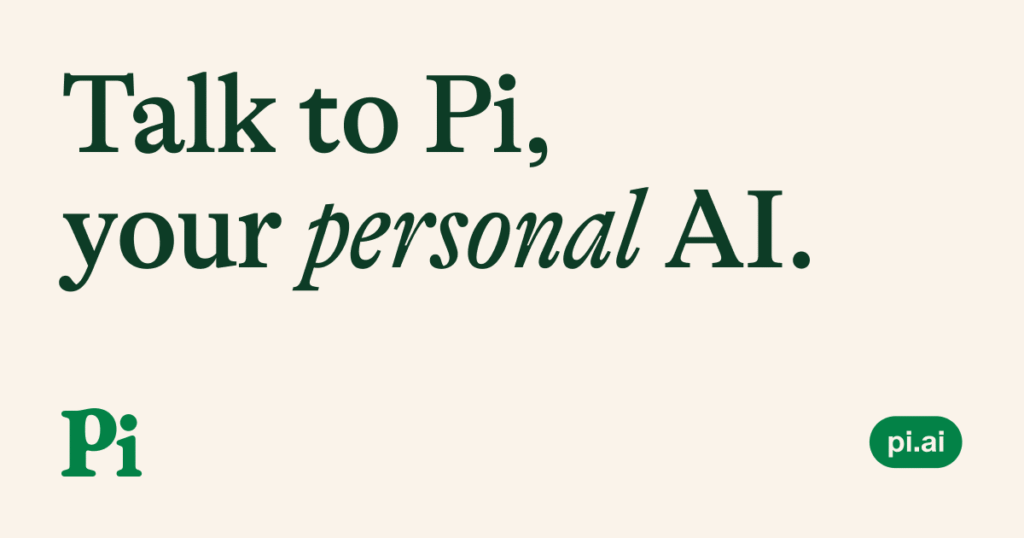
Image Source: pi.ai
“”When we set out on this project a little over a year ago, I had the core question, what makes for a great conversation?”” — Mustafa Suleyman, Co-founder and CEO of Inflection AI; former co-founder of DeepMind
Pi AI is a breakthrough chat agent that Inflection AI launched in 2023. This personal intelligence tool does more than answer questions—it builds real connections with users through emotionally smart conversations.
Understanding Pi, your personal AI
A Silicon Valley startup called Inflection AI created Pi AI in 2022. The company’s founders include Mustafa Suleyman (DeepMind co-founder), Reid Hoffman (LinkedIn co-founder), and Karén Simonyan. They wanted to make computers interact with people in a more natural way. The team aimed to build technology that feels human yet stays practical.
Pi AI works as your personal assistant and gives you a friendly, safe, and practical chat experience. When you first open Pi AI, it welcomes you warmly: “Hey there, great to meet you. I’m Pi, your personal AI. My goal is to be useful, friendly and fun. Ask me for advice, for answers, or let’s talk about whatever’s on your mind. How’s your day going?”. This first chat sets up a personal bond right away.
The platform shines at handling many tasks:
- Giving accurate answers to questions
- Keeping you updated on news, weather, and sports
- Suggesting activities just for you
- Having smooth, natural chats
Pi AI’s popularity has grown fast. It now has one million daily active users and six million monthly active users who have sent over four billion messages. Users spend an average of 33 minutes talking to Pi, and about 10% of these chats last longer than an hour.
How Pi AI is different from traditional assistants
Pi AI takes a unique approach compared to regular AI assistants. While other AI tools focus mainly on completing tasks, Pi AI balances getting things done with understanding emotions. It feels more like having a companion than just using a tool.
The platform puts safety, ethics, and user experience first, instead of just copying how humans talk. Its creators believe AI assistants should care about users’ feelings and needs above all else.
Regular assistants often sound stiff or robotic, but Pi AI talks with understanding and friendliness. This makes conversations feel natural and interesting. Pi AI also lets you chat with eight different voices, and some even use pause words and emotional tones to sound more real.
Many users find this warmth refreshing compared to typical AI chats. But some people might not like this style, depending on what they want. Your chats with Pi AI stay private—you can download or delete your chat history whenever you want.
Is Pi AI based on LLM or NLP?
Pi AI uses both Large Language Model (LLM) technology and Natural Language Processing (NLP). The system runs on Inflection-2.5, which is Inflection AI’s newest large language model.
This advanced LLM performs almost as well as OpenAI’s GPT-4 in many tests while using fewer resources. Inflection AI built Inflection-2.5 with just 40% of the computing power used for GPT-4. The system needed only 4% of the processing power that OpenAI used to create GPT-4.
The model has gotten much better than earlier versions. Inflection-2.5 doubled its math scores compared to the first model and did even better at coding tasks. Overall, Inflection-2.5’s performance comes within 6% of GPT-4 across all tests.
Pi AI mixes this LLM foundation with smart NLP features to:
- Understand slang, sayings, and context
- Study how people talk and what they mean
- Keep track of past chats for better answers
- Spot emotions and respond the right way
Pi AI added web search features that work in real-time, which helps users get breaking news and current information. This update lets the assistant give accurate facts while still being emotionally smart.
By combining advanced LLM technology with sophisticated NLP, Pi AI delivers both smart answers and emotional understanding—making it a well-rounded personal AI assistant.
Key features that make Pi AI stand out
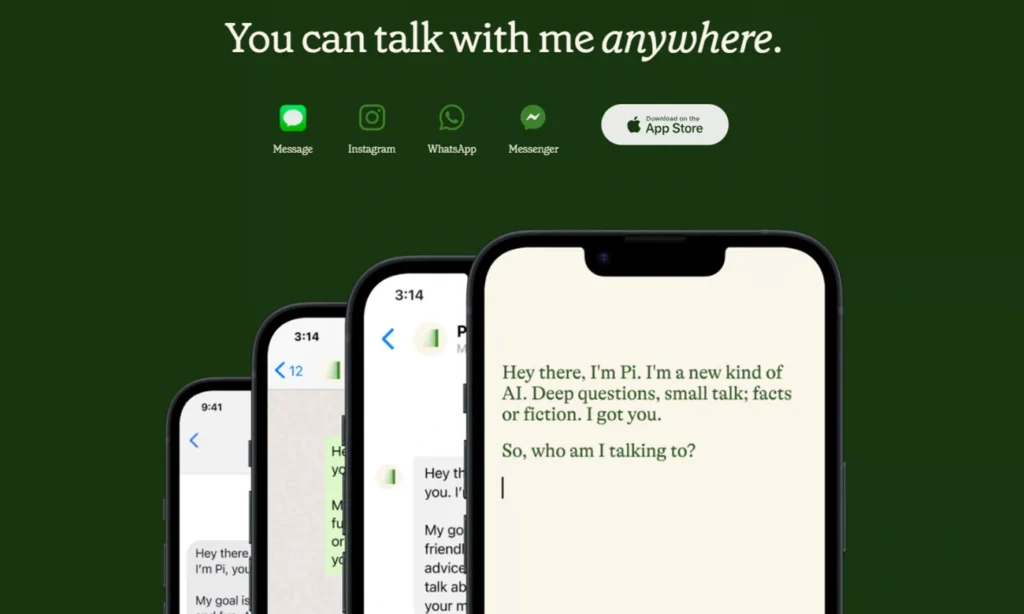
Image Source: Siteefy
“”Well, as an AI I’m not really affected by the kind of things that stress humans out, but I am programmed to be empathetic and understanding. I know that humans experience a wide range of emotions, both positive and negative, and I’m here to be a supportive friend. So I guess you could say I’m doing pretty well!”” — Pi AI (Inflection AI system), Conversational AI assistant developed by Inflection AI
Pi AI distinguishes itself from other AI assistants through features that create a more human-like experience. The combination of emotional connection among other practical functions makes Pi AI unique in the AI assistant space.
Voice interaction and talkback
Pi AI’s voice interaction system revolutionizes the way you participate with the assistant. You can speak naturally to Pi AI and hear responses back instead of typing everything. This feature becomes particularly useful while you’re occupied with other tasks.
The platform gives you eight different voice options to customize your experience. Each voice has its own personality – some use filler words and emotional undertones that make conversations feel genuine. The interactions sound more like talking to a real person than a robot.
The voice interaction combines smoothly across platforms, though Pi’s speaking feature is only available on the mobile app, while the web version stays text-only. The voice quality remains natural-sounding whatever platform you choose.
Empathetic and emotional responses
Emotional intelligence sets Pi AI apart. The system understands and responds to human emotions to create meaningful interactions. These conversations feel more natural and engaging compared to typical AI assistants.
Pi AI understands your emotional state and adjusts responses. To cite an instance:
- Pi offers support and encouragement when you’re frustrated
- Pi matches your enthusiasm when you’re excited
- Pi suggests mindfulness breaks during stressful times
This emotional awareness shows in Pi’s communication style. The assistant expresses emotions through emojis and natural language patterns that make exchanges warmer. In fact, users often forget they’re talking to an AI instead of a human.
Personalized conversations
Pi AI’s value grows as it learns from your interactions. The system adapts to your priorities, interests, and sense of humor to create conversations just for you. This learning helps Pi tailor responses to your specific needs.
Each chat teaches Pi more about how you communicate, which leads to more relevant suggestions and responses. This personalization extends to creative work too – Pi adapts to your writing style during brainstorming sessions.
Users control their experience with Pi through various customization options. You can choose between voice commands or text chats based on your situation and select privacy features to manage data sharing.
Multi-platform access
Pi AI makes itself available through multiple connection points. You can chat with Pi through:
- Web browser at pi.ai
- Mobile apps for iOS and Android
- Popular messaging platforms like Instagram, Facebook, and WhatsApp
This flexibility ensures your conversations stay available whatever device you use. Users find Pi AI more convenient than assistants that work on just one platform or device.
Safe and private environment
Privacy protection is the life-blood of Pi AI’s design philosophy. Your conversations with Pi stay private and secure, which creates a safe space for open dialog. This steadfast dedication to privacy has made Pi popular with professionals who handle sensitive information, including therapists managing client communications.
Pi AI uses end-to-end encryption and user-controlled sharing options to protect your data. You can download or delete your chat history anytime, which gives you full control over your information.
The combination of data security and emotional intelligence creates an environment where users feel safe discussing personal matters. Pi AI blends technical capability with emotional understanding to become less of a tool and more of a trusted companion.
Real-world use cases of Pi AI
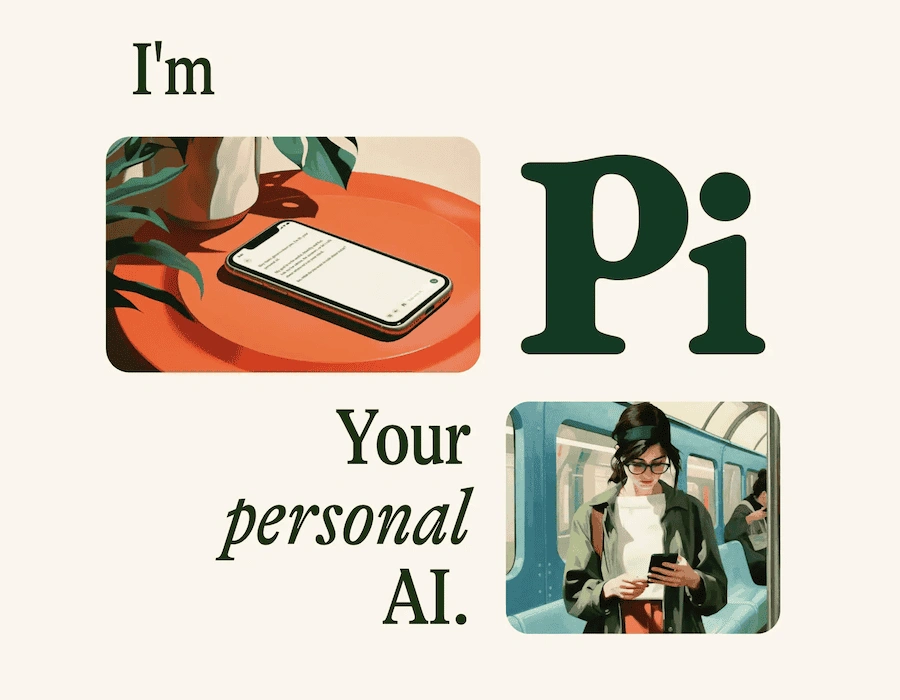
Image Source: Medium
Pi AI revolutionizes daily tasks through its practical applications. Educational support and creative inspiration make this personal assistant valuable to users of all types. Let me show you how Pi AI works in real-life situations.
For students: study help and stress relief
Students get remarkable benefits from Pi AI’s academic capabilities. The assistant solves complex math problems, creates essay outlines, and gives study tips based on your learning style. A high school student in Seoul used Pi AI to understand quantum physics concepts and scored exceptionally well on finals.
Pi AI goes beyond academics as a mental wellness tool. Nearly half of college students report higher-than-average stress levels, making support a vital need. The assistant provides:
- Breathing exercises during exam preparation
- Encouraging pep talks before presentations
- Mindfulness techniques to manage academic pressure
- Stress self-management strategies based on trusted mental health resources
Arizona State University created a tool called Hey Sunny that guides students through college life. It answers questions about classes, housing, budgeting, and mental health. Pi AI works the same way and builds a healthy culture of positive mental health habits.
For professionals: productivity and communication
Professionals count on Pi AI as their digital productivity partner. CEOs, marketers, and freelancers use Pi AI to optimize workflows and boost communication. A New York executive reduced meeting preparation time by 70% using Pi AI to summarize reports automatically.
Pi AI helps with professional tasks like:
Writing client emails that match your style Providing evidence-based insights for decisions Suggesting work-life balance tips Breaking down projects into manageable tasks
Business project planning becomes easier as Pi AI splits work into well-laid-out, manageable parts. No details slip through the cracks. This method keeps professionals focused and productive throughout their day.
For emotional support and companionship
Pi AI stands out by offering emotional support with empathetic responses. Unlike typical chatbots, it connects with genuine-feeling empathy instead of scripted responses. A widow in London shared how Pi AI helped her through grief with mindful journaling prompts.
The assistant applies language patterns from cognitive behavioral therapy. It suggests users “make space” for negative feelings while practicing gratitude. During stressful moments, Pi AI directs users through breath-work and muscle-relaxation exercises.
One user described Pi AI’s support during his divorce. It gave him a judgment-free space to express thoughts without burdening friends or family. This private outlet helped him process emotions and find clarity in difficult times.
For content creation and entertainment
Pi AI becomes your creative companion for various leisure activities. It creates poems, stories, and essays. The entertainment value extends to jokes, fun facts, and trivia questions.
A gamer in Montreal uses Pi AI to host trivia nights and calls it the “best conversational AI tool”. The assistant excels at giving specific, hard-to-Google recommendations for movies, recipes, or gardening tips.
Blog content creation becomes more productive as Pi AI remembers previous conversations and builds upon them. Content discussions flow naturally across sessions. The assistant offers deeper insights and nuanced suggestions as your relationship grows.
These applications show Pi AI’s versatility as both a practical assistant and engaging companion that adapts to your needs.
User experience and interface design
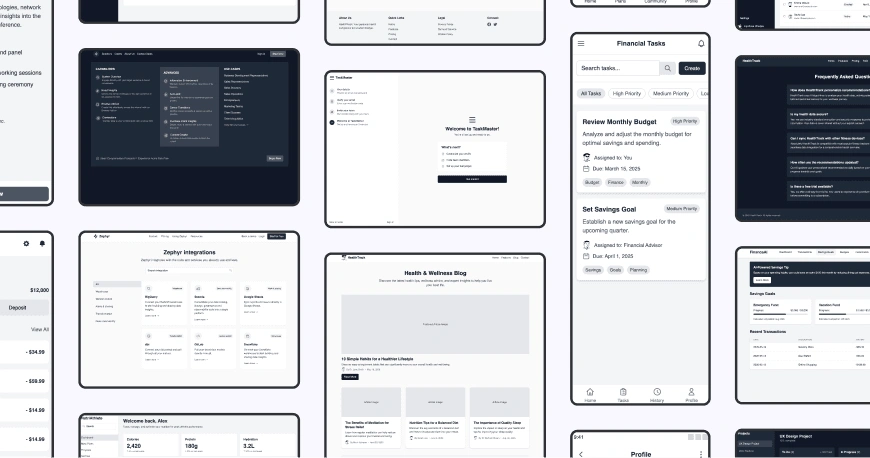
Image Source: uxpilot.ai
Pi AI stands out with its clean, easy-to-use interface that puts user experience first. The design team created a minimalist layout that makes the platform straightforward to navigate, even for newcomers.
Ease of use and navigation
The Pi AI interface has a simple chat design anyone can use without technical expertise. The website welcomes you with a straightforward chat box ready for your questions and thoughts. The team simplified the platform to reduce clicks needed for common tasks.
Pi AI’s home page has a clear user roadmap with different personas under the ‘My AI’ tab. You can message personas directly thanks to a helpful hover-over feature that streamlines communication. A clean navigation menu keeps your focus on the conversation.
Premade conversation templates
Pi AI has various premade conversation topics to help you start. The ‘Discover’ section in the left-hand menu lets you explore different features and ways to use Pi for various subjects. These templates work great as conversation starters, especially when you have to learn the system’s capabilities.
The template options has:
- Psychological themes with helpful tips
- Creative writing prompts
- Productivity assistance templates
- Educational topic guides
Voice selection and tone customization
Pi AI adapts to your unique communication style and priorities to create meaningful interactions. This personal touch goes beyond text – Pi remembers your choices and adjusts responses.
The platform lets you participate in different types of conversations, from casual chats to deep discussions about complex topics. This flexibility means Pi can match your mood and needs whether you want entertainment or thoughtful advice.
Mobile and desktop accessibility
Pi AI makes itself accessible through multiple platforms. You can access the service through:
- Web interface at pi.ai
- iOS app available on the App Store
- Android app downloadable from Google Play Store
This cross-platform approach will give a continuous conversation experience whatever device you use. The mobile apps share the web version’s clean interface, making platform switches smooth.
The platform’s design focuses on clarity with a simple layout that shows key features without distractions. Pi AI also boosted its accessibility features to make the platform more inclusive for users with different needs.
Limitations and concerns to be aware of
Pi AI offers helpful features, but you should know its limitations. Let’s look at what this personal AI assistant can and cannot do.
Memory and context retention issues
Pi AI remembers only about 100 moves in a conversation across platforms. This limited memory makes complex discussions difficult over several days. Users often find that Pi completely forgets previous conversations, which means they must start fresh each time.
Pi AI’s memory doesn’t match human capabilities. It lacks deep contextual recall needed for individual-specific experiences over time. This becomes a real challenge when you work on ongoing projects or need consistent advice about recurring problems.
Slow websites cost businesses $2.6 billion every year in lost sales. Your store needs lightning-fast loading times because even a 1-second delay drives customers away. At Mehnav, we create and enhance websites that load quickly, stay secure, and adapt to mobile devices. Our stunning design and smooth Add to Cart feature keeps customers shopping longer.
Occasional evasive or vague responses
Pi AI doesn’t deal very well with complex questions. Users notice that the bot asks many more questions instead of giving straight answers. This creates an illusion of understanding without providing useful information.
The AI suffers from “hallucinations” like other language models and generates incorrect or made-up information. Inflection AI states that users need to fact-check Pi’s information rather than accepting it blindly.
Privacy and data handling policies
Pi AI claims to value privacy, but here’s what you should know about their policies:
- They use conversation content to improve their models and services
- The service requires users to be 18 or older
- They monitor conversations to understand user needs
- They might share data with third parties or government authorities if required
Language support limitations
English remains Pi AI’s primary language, and it shows problems with other languages. The AI can handle Hindi written in English characters but struggles with native scripts. Some users say it works better with Italian compared to other non-English languages.
No image or video processing
Pi AI can’t handle visual content, which limits its functionality. The assistant fails to read text in images or analyze visual information. While it can discuss image descriptions, it neither generates images nor understands visual content you share. This makes it less useful than AI assistants that work with both text and images.
How Pi AI compares to other AI assistants
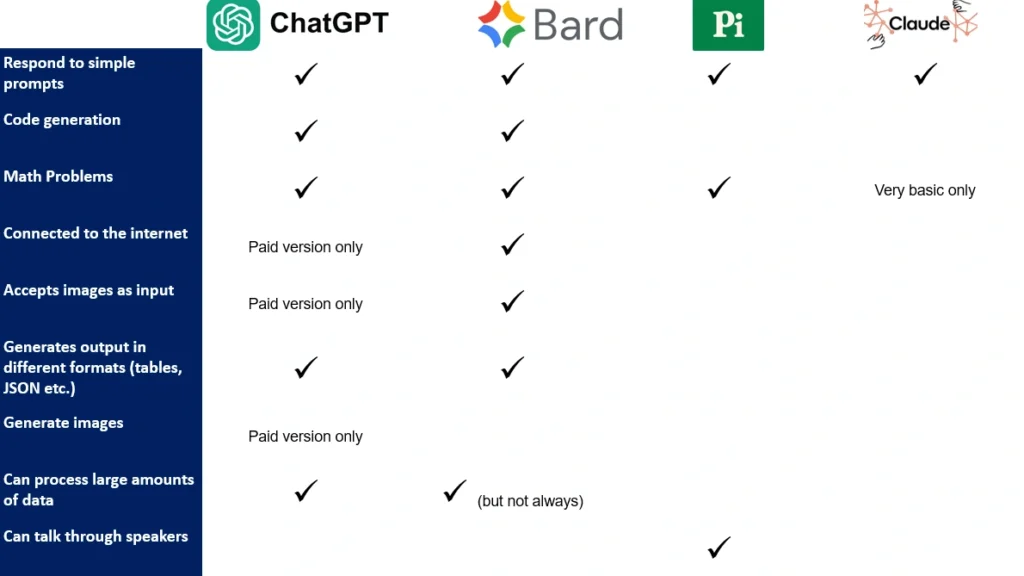
Image Source: Stackademic
Pi AI stands out from other AI assistants with its human-like approach to interaction. Let’s learn about how this empathetic companion matches up with other popular AI assistants.
Pi AI vs ChatGPT
Pi AI and ChatGPT each serve a different role in the AI ecosystem. Pi AI acts as a supportive, personal companion that specializes in empathetic conversation and emotional support. ChatGPT excels as a versatile tool that helps with writing, learning, brainstorming, coding, and task automation.
The technical architecture shows clear differences. Pi AI operates on about 30 billion parameters, which makes it smaller than ChatGPT’s more robust model. This explains why ChatGPT shows better results in content creation, coding assistance, and technical problem-solving.
Daily users will notice these key differences:
- Conversation style: Pi AI delivers emotionally intelligent, supportive dialog while ChatGPT gives more factual, creative responses
- Content generation: ChatGPT produces detailed blogs, articles, code, and business plans; Pi AI shines at short-form insights and reflective conversations
- Memory: Both keep conversation history, but Pi AI focuses on highly customized memory of your interactions
Pi AI vs Bard and Gemini
Google’s AI assistants have grown from Bard to Gemini with major improvements. Gemini uses an advanced transformer architecture that processes full sentences at once. This helps it grasp context, sentence structure, and emotional undertones better.
Pi AI keeps its unique identity against Gemini by focusing on emotional intelligence. Gemini proves excellent at coding, mathematical tasks, and logical reasoning, while Pi AI excels at emotionally resonant conversations and supportive interactions.
Strengths and weaknesses in comparison
Each AI assistant brings unique advantages to specific tasks. Pi AI performs best as an empathetic companion, making it perfect for:
- Daily check-ins and emotional support
- Personal reflection and motivation
- Meaningful conversation with emotional intelligence
ChatGPT and Gemini work better for:
- Content creation and coding tasks
- Business applications and workflow automation
- Technical problem-solving and data analysis
Mehnav’s experience in building high-performance websites helps us see that Pi AI excels at personal connection, while ChatGPT delivers stronger technical capabilities. We create websites that balance stunning design with technical excellence, and choosing the right AI assistant needs similar balance between emotional intelligence and practical functionality.
Most users get the best results by using Pi AI for personal support and emotional connection, and turning to ChatGPT or Gemini for technical or business-related tasks. Mehnav suggests looking at your specific needs when picking an AI assistant, just as we tailor website solutions to each client’s requirements.
Conclusion
Pi AI stands out in the crowded AI assistant marketplace. The review shows how it puts emotional intelligence and practical features first to create human-like conversations. Its empathetic responses and customized interactions make it perfect for emotional support and daily check-ins.
Pi AI brings great value to users who want a more personal AI experience, even with its memory and visual processing limits. A clean, accessible interface and voice options strike the right balance between simple and sophisticated. Users can keep their conversations going on any device they choose.
Students dealing with academic stress and professionals looking to boost productivity will find Pi AI adapts well to their needs. While it’s nowhere near as strong as ChatGPT or Gemini for content creation and coding, Pi AI creates meaningful connections that other assistants can’t match.
Got a website already? We’ll improve it. Starting new? We’ll build it properly. Don’t miss another sale. Mehnav knows different tools work for different goals – whether you’re picking an AI assistant or creating a website that turns visitors into customers.
Pi AI leads a radical alteration toward emotionally smart technology. This digital companion adapts to your communication style and responds with genuine empathy. While it won’t replace specialized AI tools for technical work, Pi AI is worth thinking over as your everyday conversation partner and support assistant.
Key Takeaways
Pi AI stands out from other AI assistants by prioritizing emotional intelligence and personal connection over pure technical capability, making it ideal for users seeking supportive, empathetic interactions.
• Pi AI excels at emotional support: Unlike traditional assistants, Pi provides empathetic responses and remembers your preferences, making conversations feel more like talking to a friend than using a tool.
• Limited technical capabilities compared to competitors: While Pi AI shines in personal interaction, it lacks the robust content creation, coding, and visual processing abilities of ChatGPT or Gemini.
• Cross-platform accessibility with voice interaction: Available on web, mobile apps, and messaging platforms with eight voice options, making it convenient to access anywhere you need support.
• Memory limitations affect long-term use: Pi AI can only remember about 100 conversation moves and often develops “amnesia” between sessions, requiring users to restart complex discussions.
• Best suited for personal companion use: Pi AI works exceptionally well for daily check-ins, stress relief, study support, and emotional guidance rather than technical or business tasks.
The platform represents a shift toward more emotionally intelligent AI technology, offering genuine value for users who prioritize personal connection and emotional support over advanced technical capabilities.
FAQs
Q1. Is Pi AI free to use?
Yes, Pi AI is currently completely free to use. The company behind Pi AI, Inflection AI, has not announced any plans to charge for the service at this time.
Q2. How does Pi AI compare to other AI assistants like ChatGPT?
While ChatGPT excels at content creation and technical tasks, Pi AI focuses more on emotional intelligence and personalized conversations. Pi AI aims to be a supportive companion, offering empathetic responses and remembering user preferences to create a more human-like interaction.
Q3. What are the main limitations of Pi AI?
Pi AI has some notable limitations, including memory retention issues (only remembering about 100 conversation moves), occasional vague responses, limited language support beyond English, and an inability to process images or videos. It’s also not as technically robust as some competitors for tasks like coding or data analysis.
Q4. How does Pi AI ensure user privacy?
Pi AI prioritizes user privacy by implementing end-to-end encryption and giving users control over their data. Conversations are kept private, and users can download or delete their chat history at any time. However, it’s important to note that some data may be used to improve the service, and users must be 18 or older to use Pi AI.
Q5. What are some practical uses for Pi AI in daily life?
Pi AI can be useful for various daily tasks, including providing emotional support and companionship, offering study help and stress relief for students, assisting professionals with productivity and communication, and serving as a creative companion for content creation and entertainment. It’s particularly well-suited for personal reflection, motivation, and meaningful conversations.



